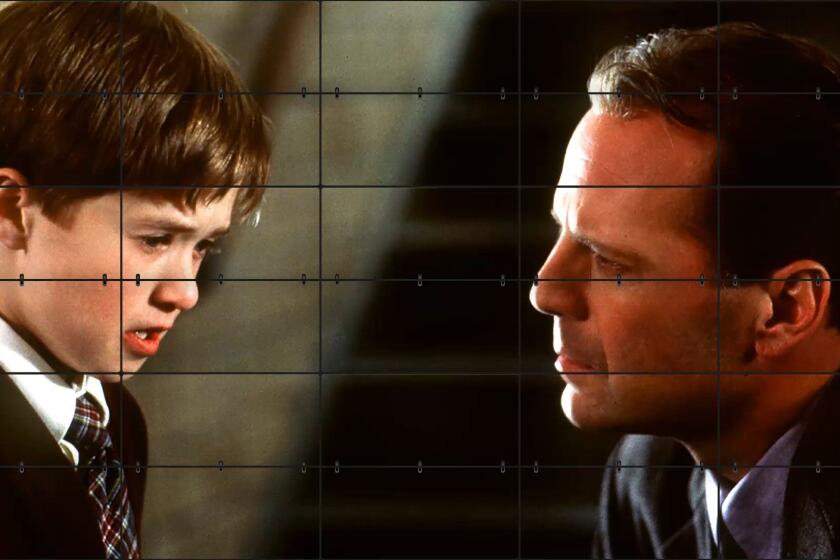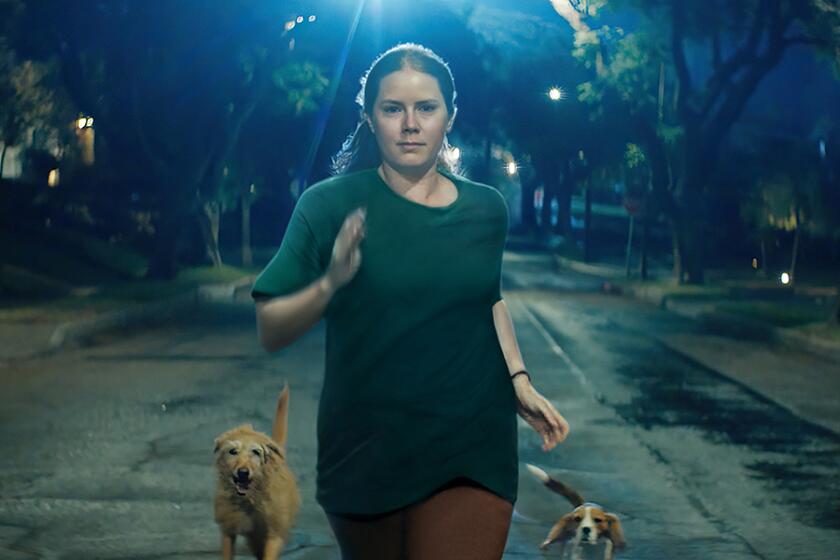Movie review: ‘Oceans’
First “Microcosmos” examined the insect universe, then “Winged Migration” flew with birds and “Planet Earth” took us to the remotest corners of the world. So it is no shock that the visual splendors of “Oceans” are up next, reaching theaters, not by coincidence, on the 40th anniversary of Earth Day.
But if the existence of a documentary that records the vastness and diversity of the ocean is hardly unexpected, what French filmmakers and “Winged Migration” veterans Jacques Perrin and Jacques Cluzard have achieved is more surprising and more difficult than might be immediately apparent.
It’s not only that spending four years going far underwater presents physical challenges, it’s that fish are neither as automatically heart-tugging as “Planet Earth’s” land animals nor as easy to find a story for as those determinedly migratory birds.
And, in fact, “Oceans’” voice-over narration, read by Pierce Brosnan, is the film’s weakest link, suffering, as an early version of the voice-over for “March of the Penguins” did, from its proximity to an overly poetic French style of nature narration. Where is the spirit that inspired the title of Jacques Cousteau’s classic “The Silent World” when we need it?
But once “Oceans’” exhilarating visuals get going, it’s easy to ignore the words. This really is a film that manages to show us things we’ve never seen and make what we have already seen look different and new.
The most arresting thing about “Oceans” is how unexpectedly bizarre many of the creatures that live deeper under the sea than either Charlie the Tuna or “The Little Mermaid’s” Ariel actually look. Invaders from the deepest part of outer space couldn’t seem any stranger and, aside from specialists, most people will have no idea living things this outré exist.
Take, for example, the mobula rays, which waft through the depths like oceanic kites, or the exquisite cape that the blanket octopus releases when it feels threatened, or even the remarkable grace of a sea slug called the Spanish dancer. These really do have to be seen to be believed.
“Oceans” is equally good at sea folks everyone is familiar with. The filmmakers constructed special equipment to film a pod of spinner dolphins leaping casually out of the water, let us marvel at a dozen humpback whales breaching at the same time and reveal what starfish look like when they are walking across the ocean floor on the tiniest of tube-like feet.
Like any nature documentary worthy of the name, “Oceans” does not stint on what might be called fang and claw stuff, on showing how these creatures dine on one another to stay alive. We see newly born sea turtles consumed by diving frigate birds, watch a great white shark swallow a seal in one gigantic bite and simply shake our heads as two armies of fierce-looking spider crabs collide for no apparent reason.
Given that it is partially funded by Participant Media, a company that believes in films making a difference in the world, it’s not a surprise that “Oceans” makes a point of letting us know that “human indifference is the oceans’ greatest threat.” The film has several unsettling shots, including huge fish trapped in nets and a haunting image of a supermarket shopping cart deep underwater, but the message is relatively soft-pedaled compared with more overtly political docs like “The End of the Line.”
One of the unexpected pleasures of “Oceans” is the footage that runs alongside the final credits, which shows the film’s camera people working far under the surface. Not only is it arresting to see humans in this environment, it is, to give one example, mind expanding to witness how tiny and puny humans are compared with a massive blue whale that might be 100 feet long. This is not just another world, it’s an alien universe, and we are privileged to get a look inside.
More to Read
Only good movies
Get the Indie Focus newsletter, Mark Olsen's weekly guide to the world of cinema.
You may occasionally receive promotional content from the Los Angeles Times.











